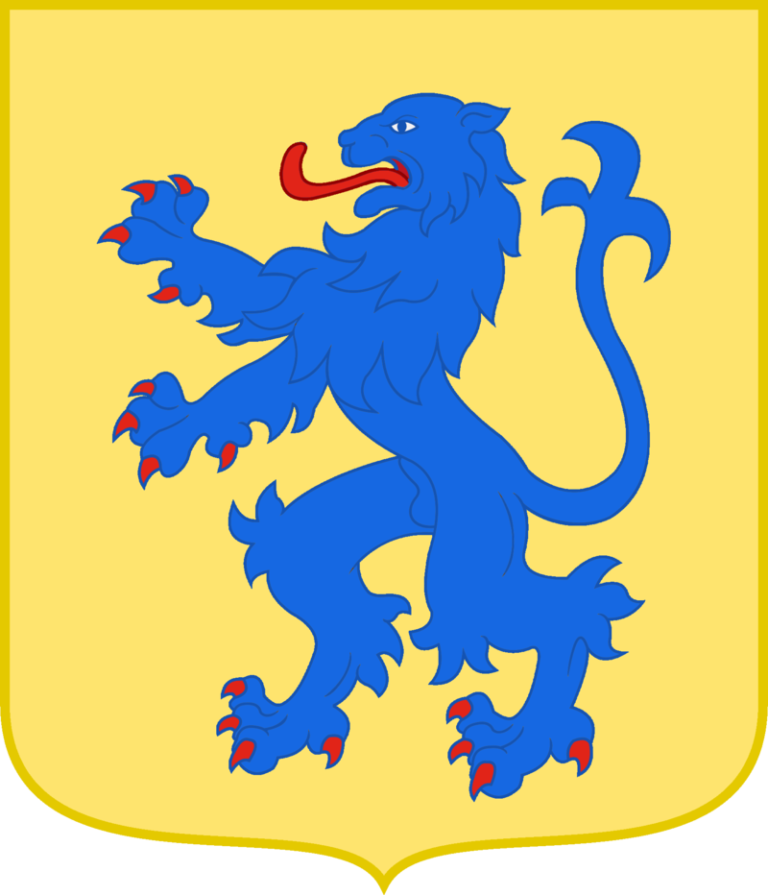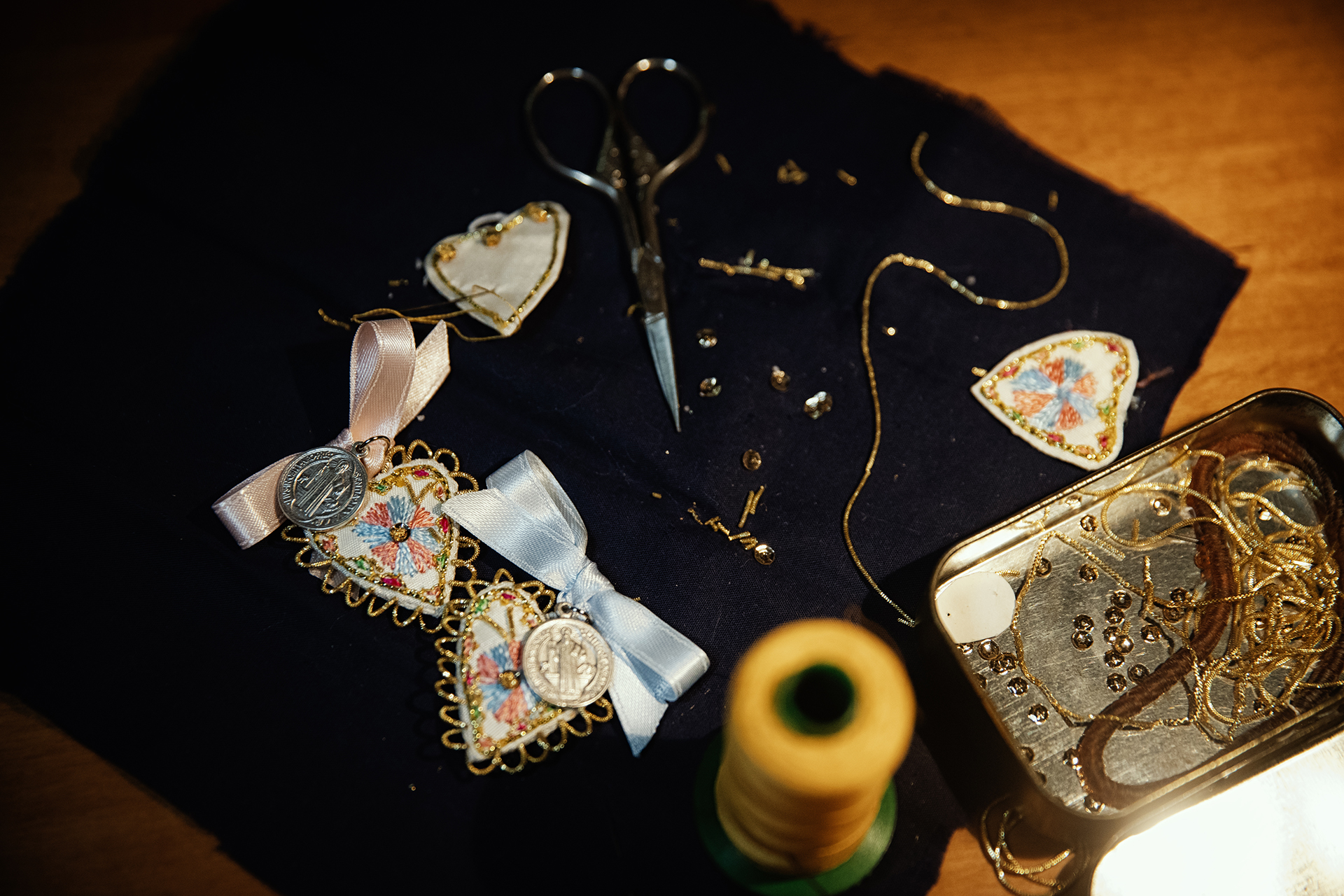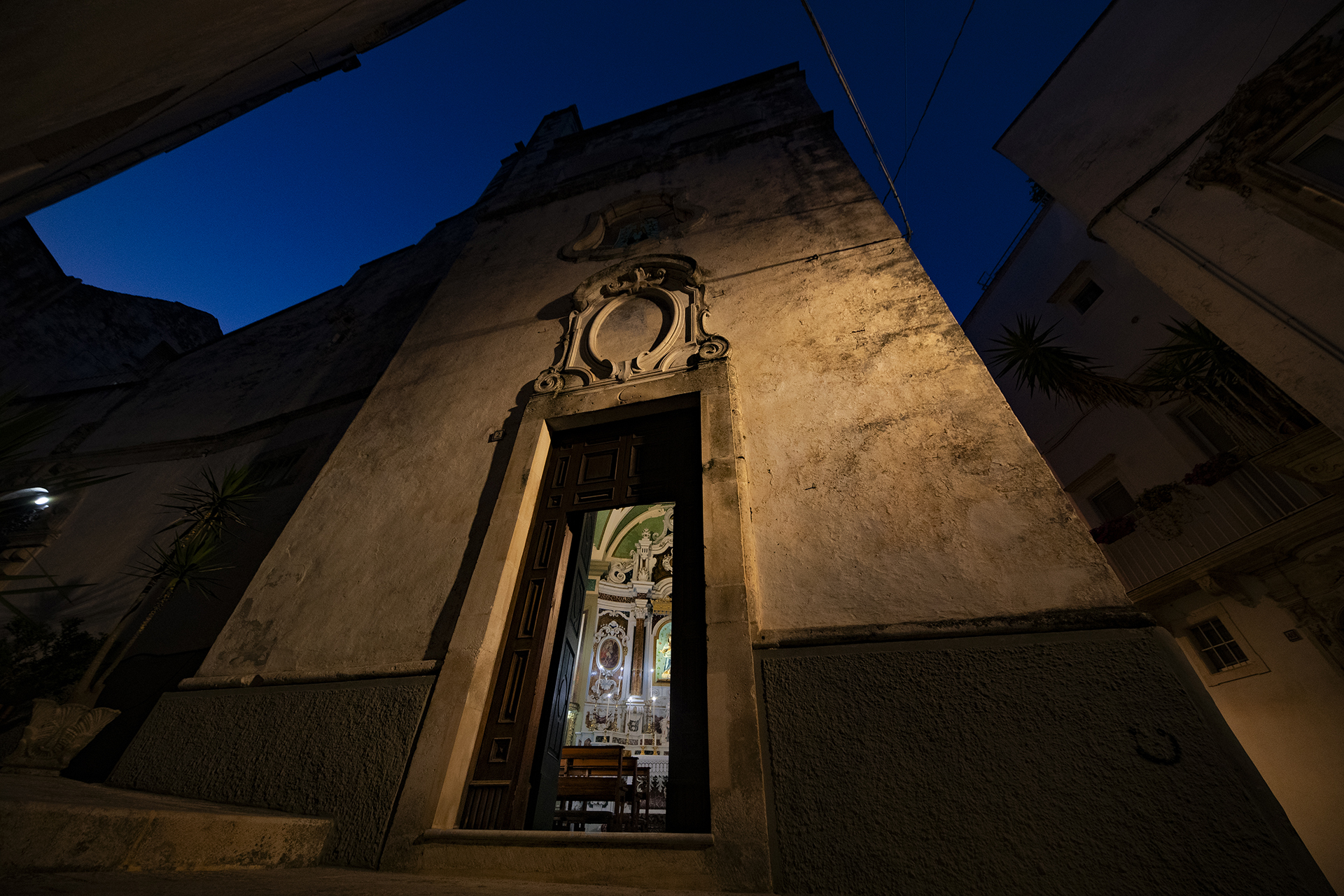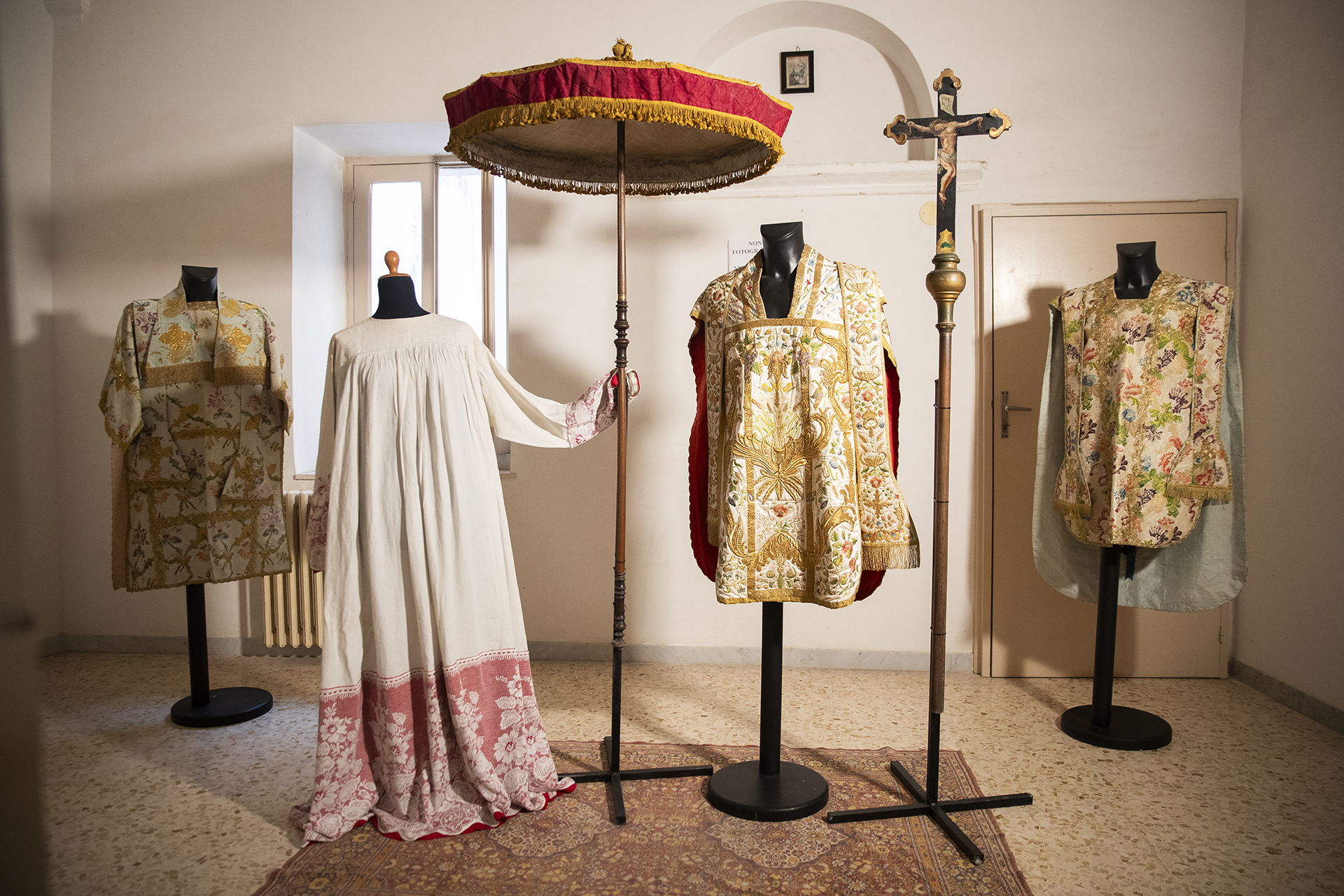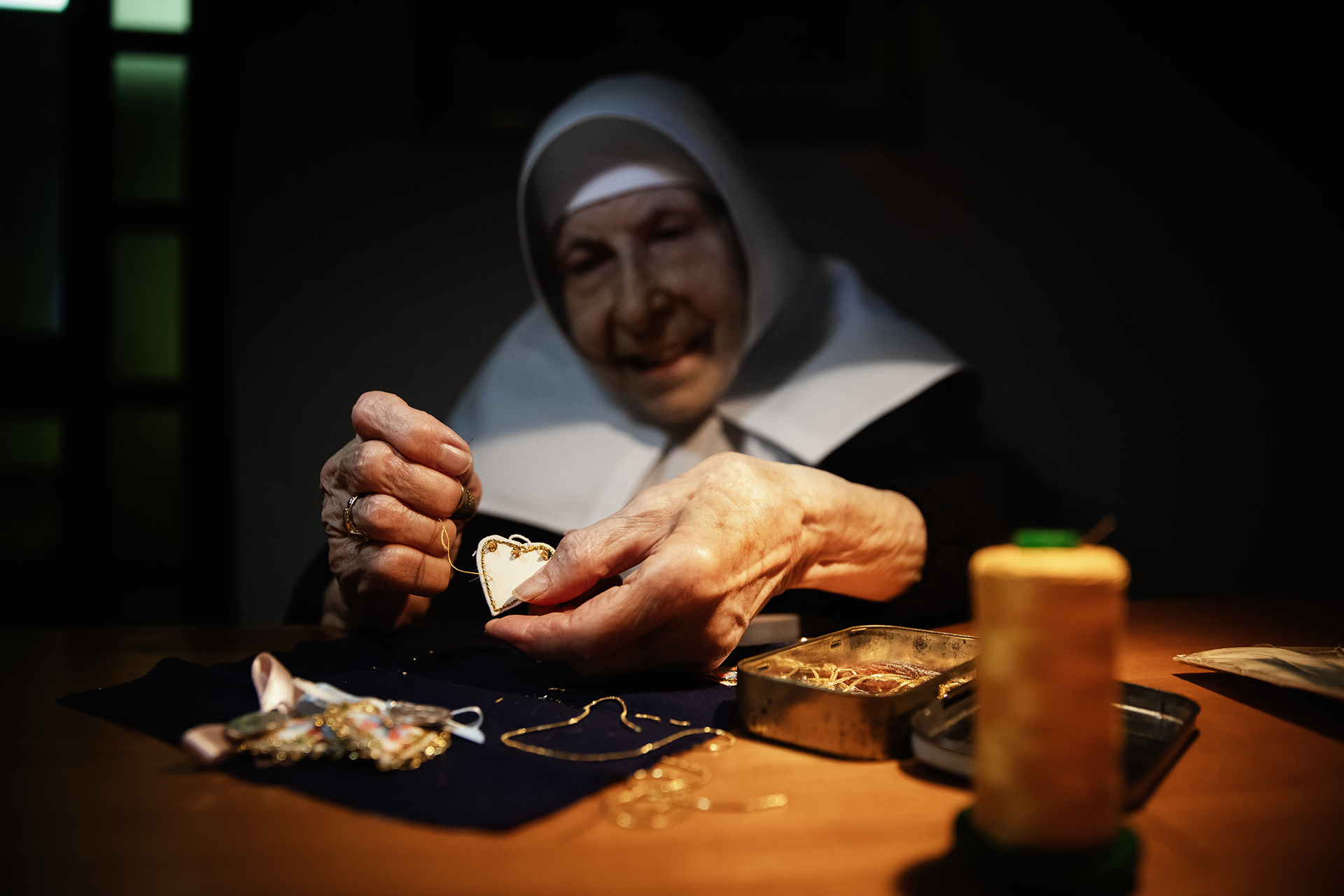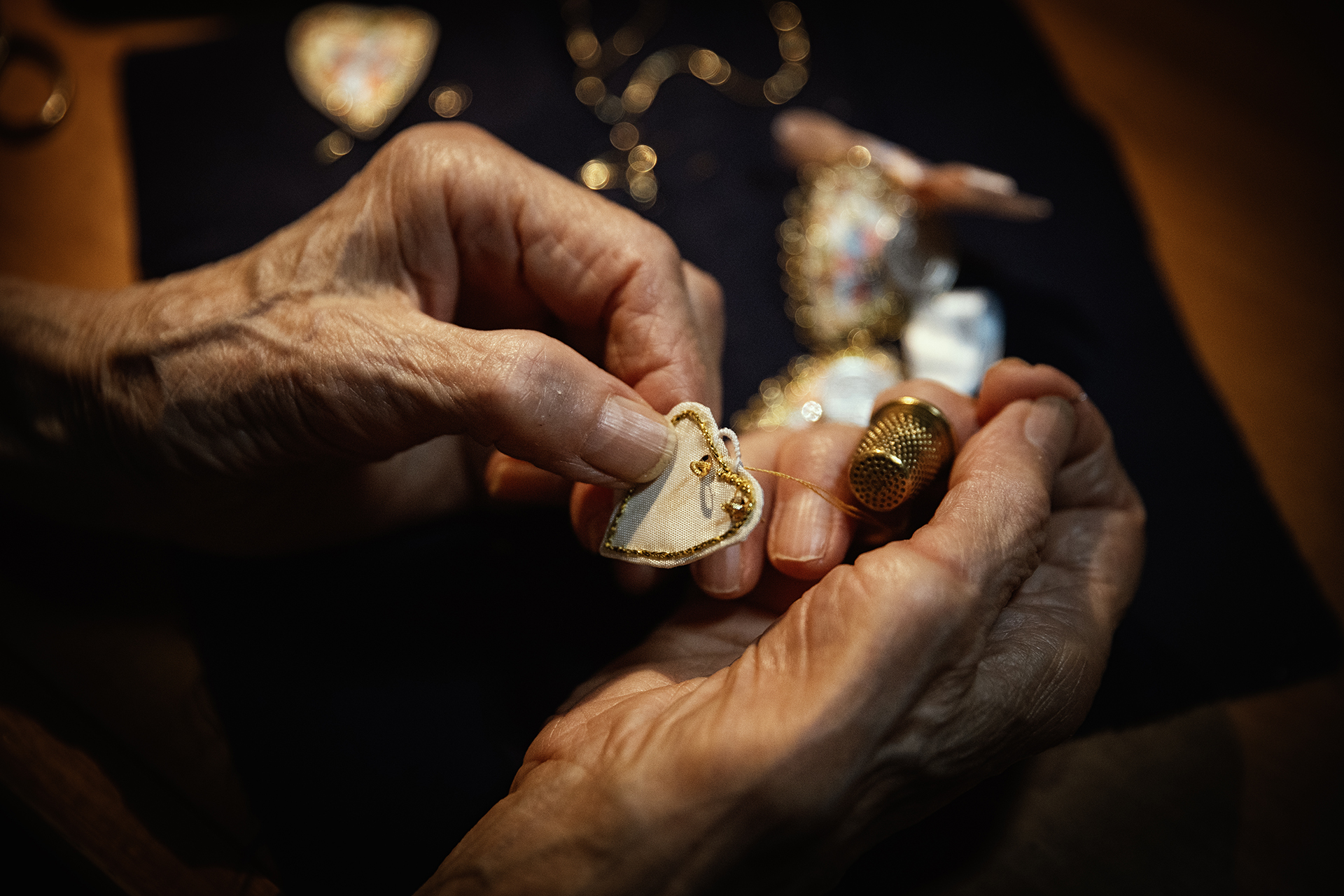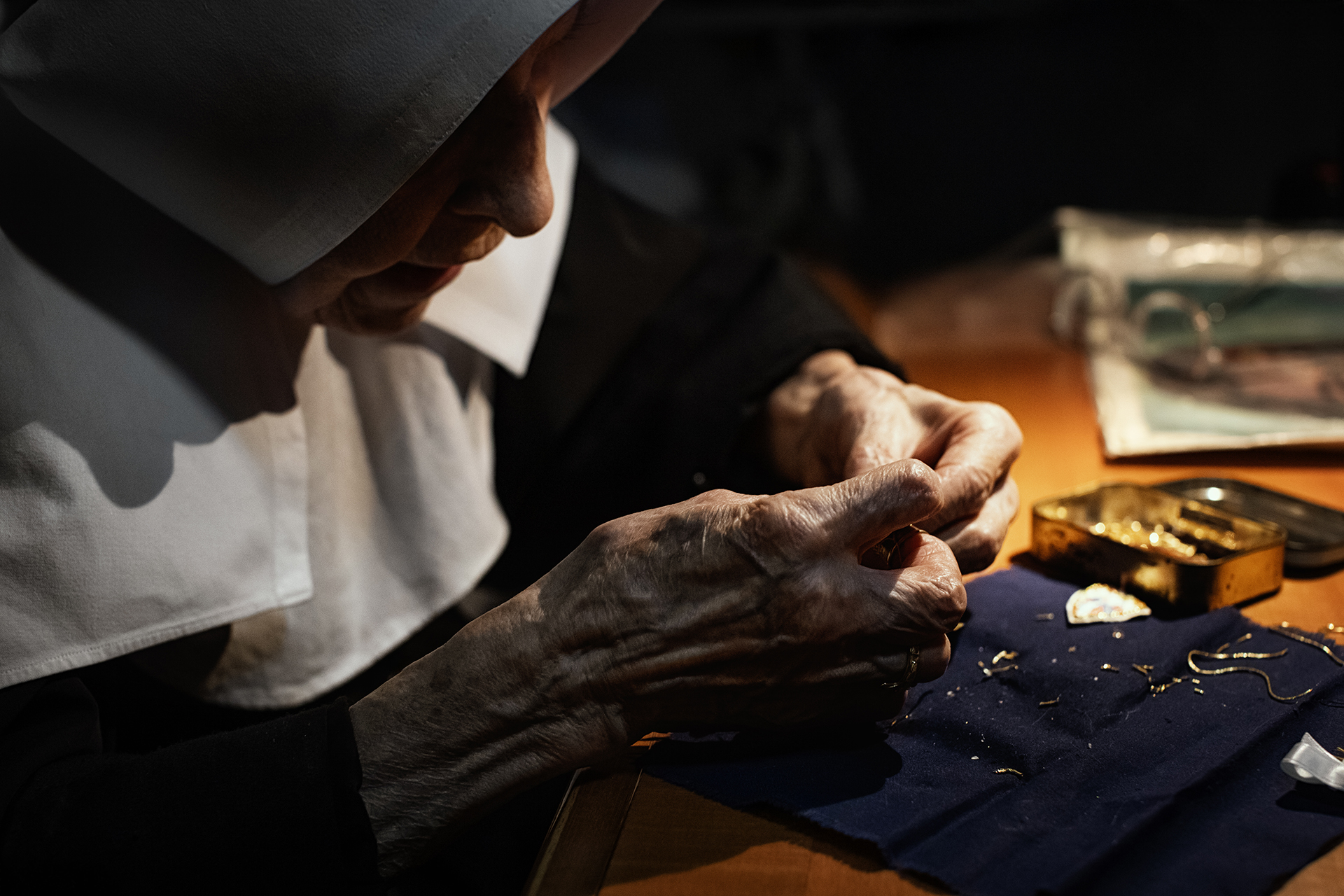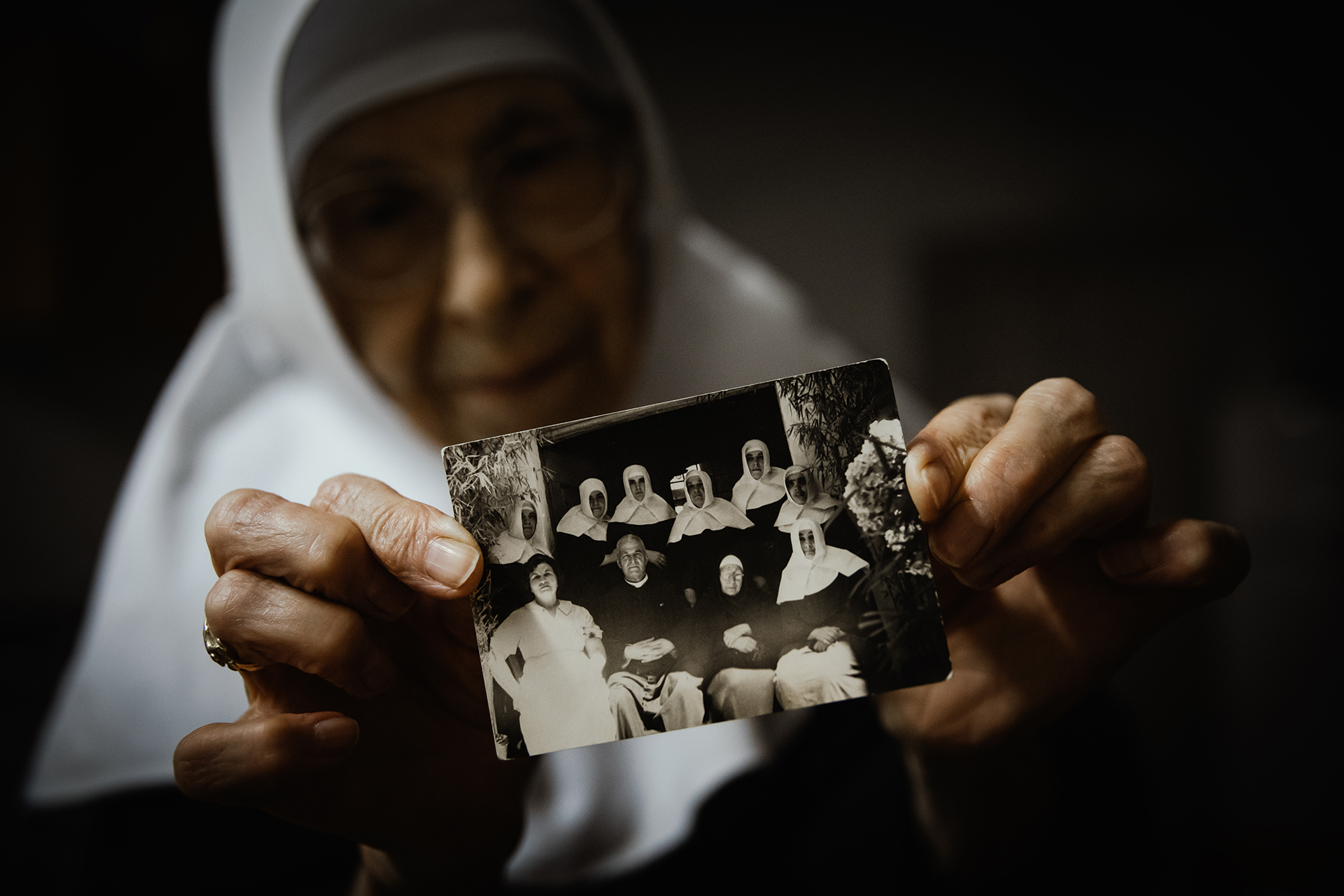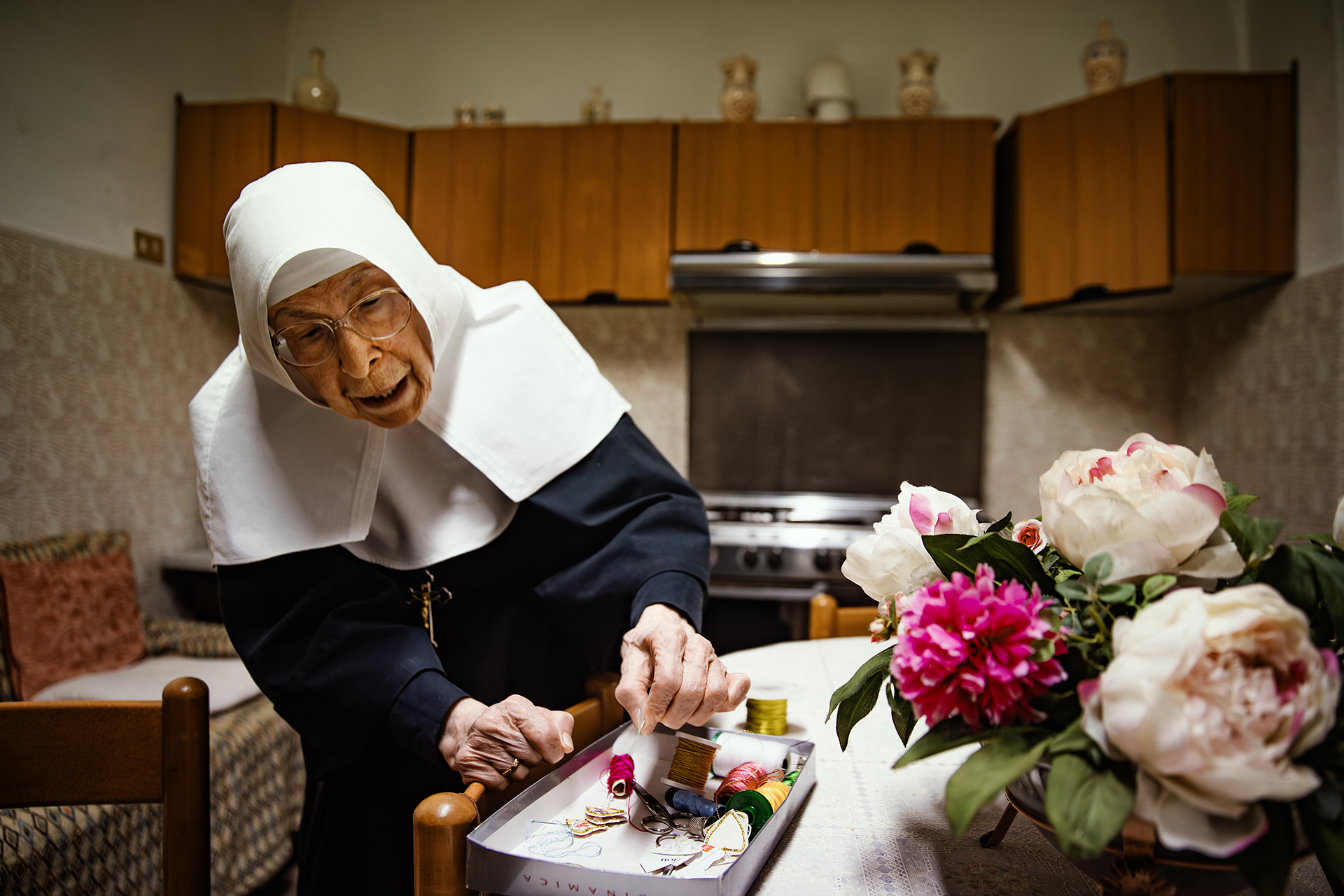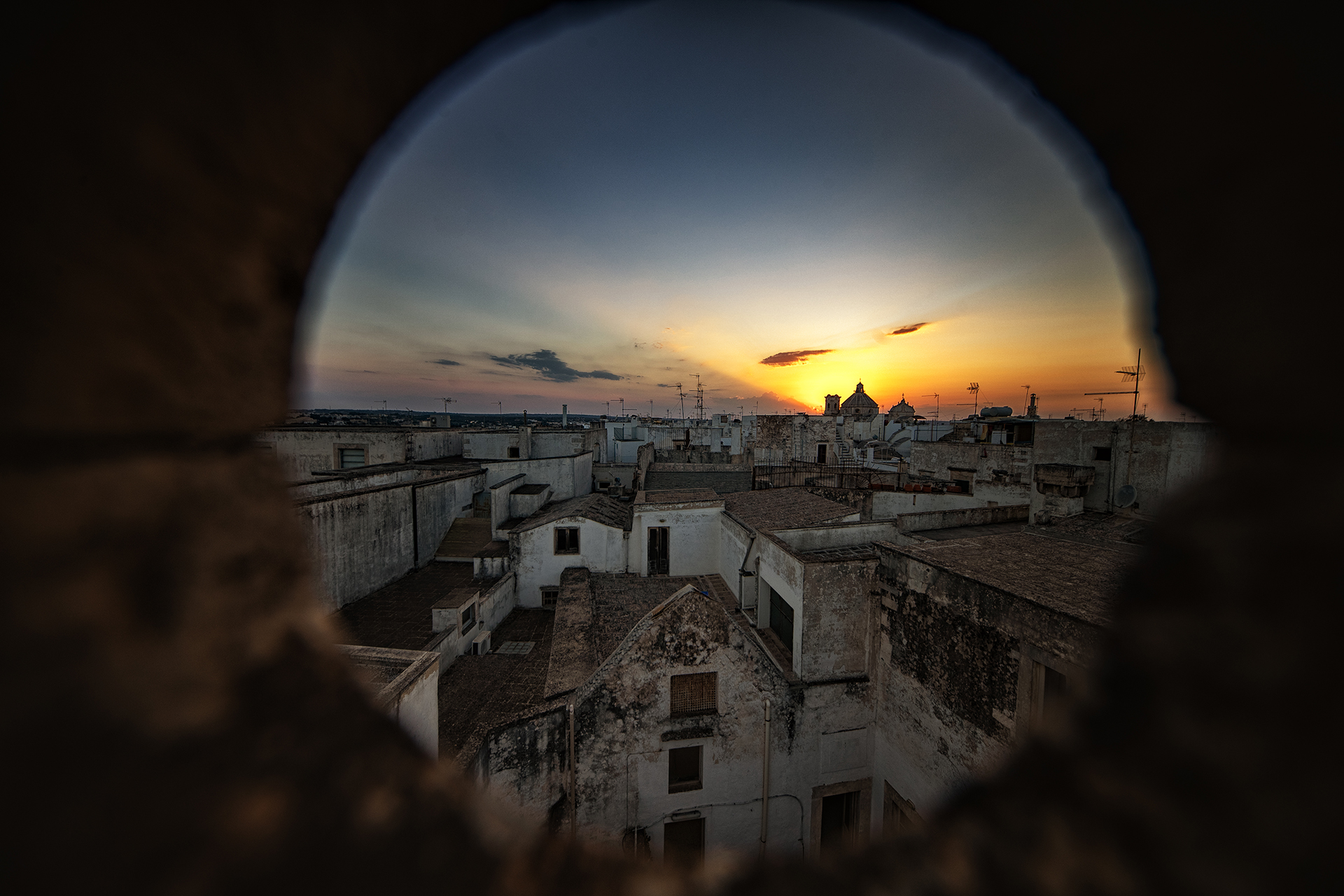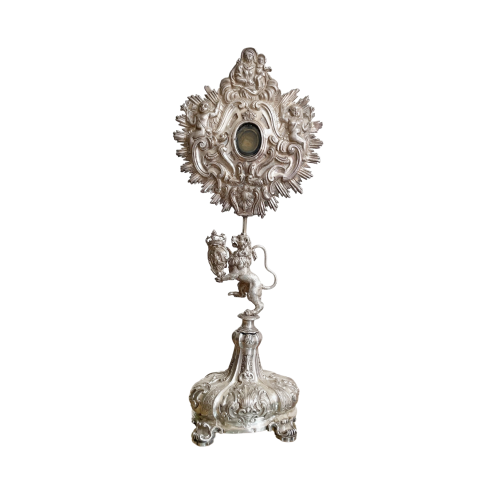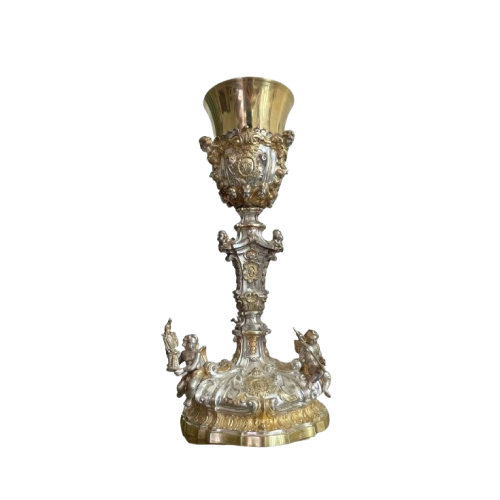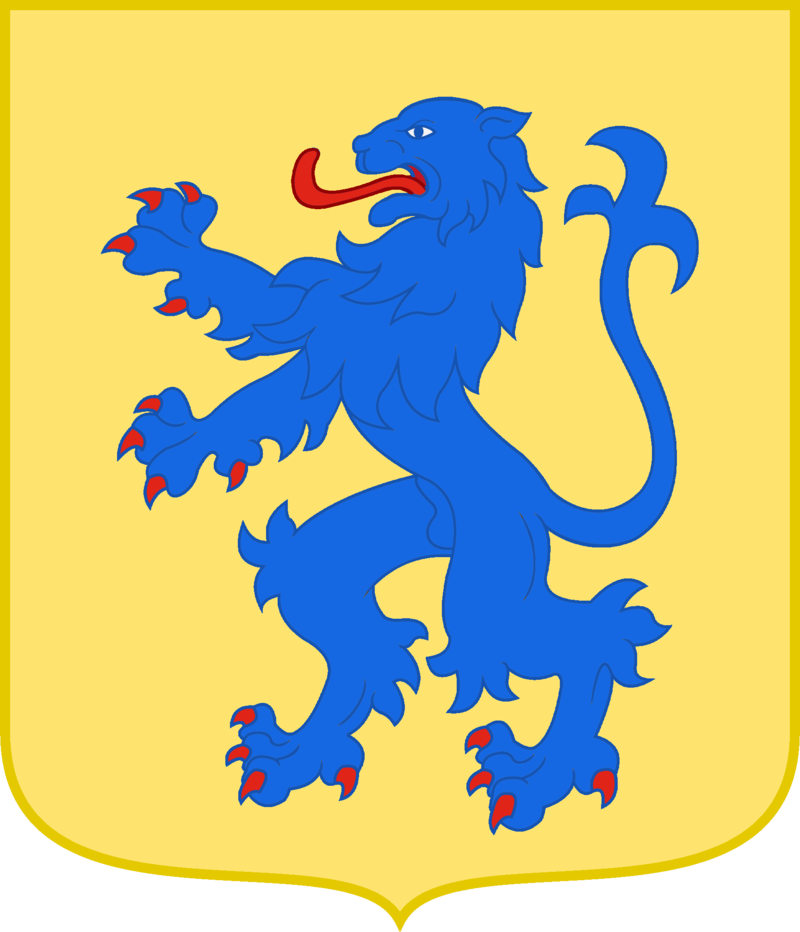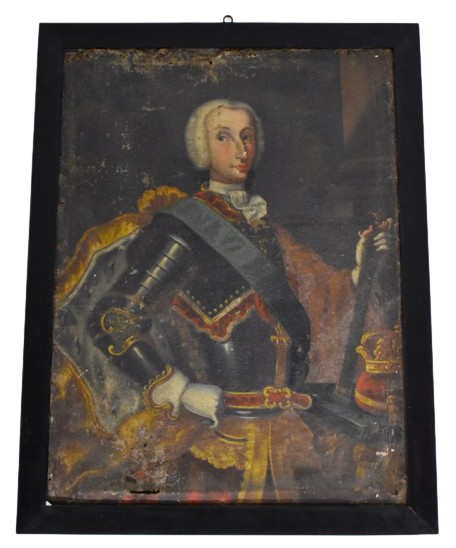
Charles III of Bourbon
18th century – Dimensions 100cm x 80cm
The portrait depicts Charles III of Bourbon, founder of his dynasty, who inherited several states in Western and Southern Europe, as well as the kingdoms of Naples and Parma, upon the death of his half-brother Ferdinand VI. Charles III is depicted in three-quarters, wearing a metal breastplate with a green band of an unidentifiable order of chivalry and holding the baton of command in his left hand, with the royal crown on the same plane. He may have been portrayed in the same place as his wife, as indicated by another portrait of the time. In the background is a throne decorated in eighteenth-century style. The portrait exalts his role as a military commander, highlighted by the use of breastplate and baton, following the model of “state portrait” developed in Naples by court painters. A significant comparison can be made with the portrait by Anton Raphael Mengs, a famous eighteenth-century artist, probably made before 1779 and preserved in the Uffizi in Florence.
Giorgia Turco and Donatella Salamida.
The portrait depicts Petracone VIII di Caracciolo, son of Placido de Sangro and Francesca del Giudice, born on 24 December 1804 and died on 3 August 1827 by suicide. The subject is portrayed half-length, three-quarters, with half-closed eyes, indicating the funerary nature of the painting. The name and dates of birth and death are present in the cartouche at the bottom. The face has reddish and curly hair, illuminated by a frontal light source. The other three 19th-century portraits of the last heirs of the Caracciolo family cannot be attributed with certainty to the author. However, it is hypothesized that they could be the work of the painter Giuseppe di Giuseppe, active in Martina Franca during the period in which they were made, known for his specialization in portraits. The composition and chromatic choice of the paintings seem to reflect the effects of photography, a technique recently introduced at the time.
Giorgia Turco and Donatella Salamida.

Petracone Vlll Caracciolo
After 1827 – Dimensions 46cm x 62cm
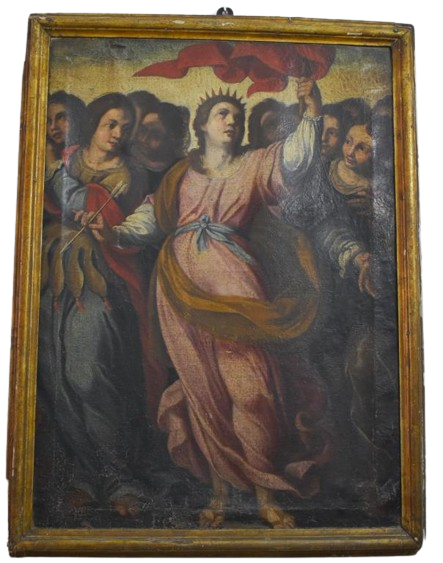
Saint Ursula
18th century
In the painting, Saint Ursula is depicted in the foreground while returning to Rome during a pilgrimage and is attacked by the Huns, with King Attila who falls in love with her and makes her a proposal of love, but is rejected. Because of this refusal, Saint Ursula is condemned to death. The composition is balanced and balanced, with Saint Ursula in the center and other virgins arranged symmetrically around her in two groups on different levels of depth. A strong beam of light from the right highlights the leading role of Saint Ursula, while the other virgins are barely illuminated. Saint Ursula holds a flag in her left hand, symbolizing victory over martyrdom, and an arrow in her right hand, symbolizing her martyrdom. She wears Roman clothes, with a pink tunic and a golden cloak, and a rayed crown on her head that emphasizes her royalty. The movement of the wind flutters her clothes and the flag, adding dynamism to the scene.
Sulejmani Selma and Francesca Mansueto.
The representation of Saint John the Evangelist shows him sitting at the foot of a tree, concentrating on composing his Gospel. Next to him is an eagle, his symbol, offering him a papyrus scroll. The scene is illuminated by a light from above, which highlights the colors of his green tunic and purple cloak. In the background, on a rocky outcrop, is a cylindrical case that could contain scrolls. The landscape in the background shows trees and mountains.
Sulejmani Selma and Mansueto Francesca.

Saint Ursula
18th century – Dimensions: 160 cm x 66 cm

Madonna del latte
18th century – Dimensions: 32 x 43cm
The Madonna del Latte originates from the Byzantine iconography of the galaktotrophousa, widespread in medieval Italian painting. During the Counter-Reformation, this way of depicting the Madonna as a breastfeeding mother was considered inappropriate and not in accordance with the canons of sacred painting of the Council of Trent. Only later was this ancient Byzantine iconography revived, as in the case of this 17th-century painting. In the painting, the child is portrayed from behind, naked, resting on white velvet while taking milk from the Virgin’s breast. The Madonna wears a blue cloak over a yellowish tunic, while the light coming from the left creates sharp shadows on the right. The background is dark red. The Virgin looks at Christ with her head slightly inclined. This depiction of the Madonna is considered the protector of women giving birth.
.
Carlucci Flavia
In the lower register, in particular, some demons of the painting, are compared quite precisely with those of the lower register of the Last Judgment of Michelangelo in the Sistine Chapel. The elegant frames and collaboration of the Magi, close to the commissioner Imperghira, also presents references to the figurative culture of the late Renaissance and Mannerism and the typical grotesque in the mouth in that period. In the intermediate register was depicted the circumcising of Jesus, done by a priest buried from behind. On the left side in the act of praying to si ve of the Pope and the Emperor at his feet the tiara. On the opposite side flanking the circumcising we find two female figures on their knees, at his feet the crown of the Emperor and a legal one. In the upper register, the monogram of the name of Jesus is carried in triumph by a host of Angels.
The painting, on the basis of stylistic consideration, is part of the current of Mannerism, of Latin inscription that has managed to terrestrial an eti infernorium, determined separation to the three three registers. It is a passage from the letter of Saint Paul to the inhabitants of Philippi, in which it is said that in the name of Jesus every human being of the heaven of hell prays on his knees. This large altarpiece, of which the church of origin is unknown, shows the notable qualities of a painting currently not identifiable to the Mannerist matrix. The elegance and fluidity of the draperies, the strong plasticity of the figures and the canciontismo of the colors.
Carlucci Flavia

Exaltation of Jesus
600
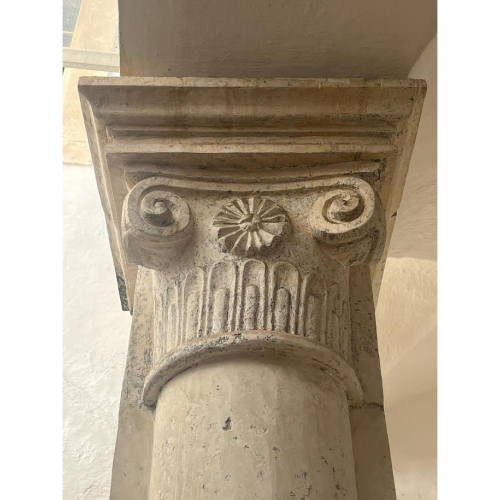
Ionic Capital
15th/16th Century
On one of the bells appears in relief the effigy of the patron saint of the city, St. Martin of Tours, recognizable by the bishop’s vestments he wears and by the pastoral staff. The Latin inscription, engraved on the bell, bears an invocation to the Virgin of Mercy, together with the name of the probable commissioner of the creation of the two bells, Pietro Simeone.
He is a prominent exponent of the local agrarian aristocracy (“gentlemen”) who during the 18th century established himself as the protagonist of important artistic commissions, together of course with the ducal family, in the context of important religious buildings of the city. In the specific case of Pietro Simeone, it is known that this person promoted, among other things, the reconstruction in late Baroque style of some altars on the right of the Church of S. Vito dei Greci and some interventions in the right nave in the Capuchin complex in Martina Franca.
In the Church of the Capuchins this person chose the place of burial, as shown by the inscription preserved here.
Several bronze bells, sometimes even from an earlier period, are documented in the city, as in the case of the Church of the Virgin of Purgatory and in that of S. Maria della Purità, part of the monastic complex of S. Agostino (Monache Grandi).

Bell Tower 15th/16th Century (Bells cast in bronze)
